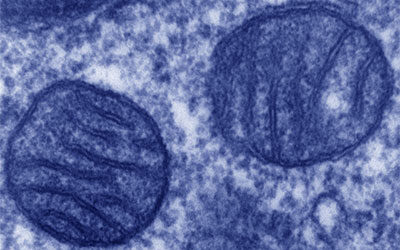I’ve heard that there is a big difference nutritionally between raw honey and regular store-bought honey. I imagine that our ancestors were eating raw honey. What are the nutritional benefits of raw honey? Thanks!
Sally’s response:
Honey has been a valued food in many parts of the world, both in primitive societies and sophisticated civilizations. Hunter-gatherers are adept at removing honey from bee hives located in hollow tree trunks, using smoke to drive away the bees. In some primitive groups, honey supplies a large portion of total calories at certain times of the year. The Aborigines of Australia prized honey and distinguished between two types—light and dark. A neolithic rock painting in Spain shows a man collecting wild honey.
Egyptian writings dating from about 5500 BC refer to honey. At that time, Lower Egypt was called Bee Land while Upper Egypt was called Reed Land. Apiculture was well established in the 5th dynasty (about 2500 BC) and is shown in several reliefs in the temple of the Sun at Abusir. Tablets from the reign of Seti I (1314 to 1292) give a value of an ass or an ox to 110 pots of honey. Thutmoses III is recorded as receiving tributes of honey from Syria in 1450 BC.
The Indians used honey in religious rites. The Indian Laws of Manu, dating from 1000 BC, called for a tax of one-sixth of the beekeeper’s production.
Honey is sugary nectar of flowers gathered by bees. It is carried in “honey sacs” where enzymes begin the process breaking down the sugars. The bee then deposits her cargo into hexagonal wax cells, to provide nourishment for a young bee. Continued evaporation in the warm atmosphere of the hive gradually transforms the nectar into honey. Bees must travel thousands of miles to produce just one teaspoon of honey.
The saliva of bees breaks down the sucrose in flower nectar into the simple sugars fructose and dextrose. Honey consists of about 35-40 percent fructose and 30-35 percent dextrose along with 17-20 percent water and traces of pollen, wax, acids, proteins, enzymes, vitamins, minerals and pigments. Honey also contains gums, which are complex carbohydrates that contribute to the viscosity of honey—the more gums it contains, the thicker it will be. The flavor, texture and color of honey depend on the types of flowers that provide the original nectar.
Only careful and minimal processing will preserve the many nutritive benefits of honey. Honey should never be heated during extraction or the enzymes will be destroyed; nor should it be filtered. Honey should be thick and opaque. When it comes to honey, see-through is obscene.
Many health claims have been made for honey. Babylonian tables give recipes for “electuaries,” medicines based on honey. Pliny the Elder included powdered bees in a cure for dropsy and bladder stones. In Russia, beekeepers are noted for their longevity, and this is said to be due to their custom of eating the “honey from the bottom of the hive,” which contains high levels of “impurities” such as pollen, propolis and even bee parts.
Propolis is a resinous substance collected from various plants which the bees mix with wax and use in the construction of their hives. Extravagant health claims have been made for propolis and it has, in fact, been the subject of a number of studies. A 1992 study published in Chemical-Biological Interactions found that caffeic acid esters (which give propolis a sharp taste like cinnamon) in propolis have strong anticancer characteristics when tested on colon cancer cells.
Health claims are also made for bee pollen, claims which have been validated by at least one study. In 1948, the Journal of the National Cancer Institute reported that bee pollen fed to rats halted the proliferation of cancerous tumors. The best results occurred with only small dosages of pollen. This suggests that bee pollen is very powerful and so potent that even weak or small amounts are vigorous enough to affect the growth of cancerous tumors.
It is the pollen in unfiltered honey that is said to provide relief to allergy sufferers. Small amounts of pollen act as an inoculant against large amounts in the air that trigger reactions like the runny nose and itchy eyes of hayfever.
Unlike other sweeteners, honey is predigested and so is easy to digest. When consumed with carbohydrates, such as oatmeal or toast, the enzymes in honey help with the digestion of carbohydrates.
Since early times, man has made fermented drinks with honey. The most important was mead, an alcoholic beverage, enjoyed by the English and Russians. The word derives from the Sanskrit word for honey, which is madhu. A similar drink called t’ej is popular in Ethiopia.
What is less well known is the fact that honey itself can ferment, if it contains enough residual moisture and is left in a warm place–honey ferments but never spoils! Fermented honey actually expands somewhat, and develops rich flavors. It is an even better aid to digestion than regular honey.
The recipes in the sidebar all call for raw, unfiltered honey, preferably fermented, and all involve lactic-acid fermentation to which the honey contributes. In all of them, the enzymes are preserved, as none require high temperatures to prepare.
photo: Corn Mothers ©Betty LaDuke | Artist Betty LaDuke works with Heifer International to end world hunger by offering families in need long term solutions that work. One of the cornerstones of Heifer’s approach is “Passing on the Gift”, a cycle of sustainability where people share the offspring of their animals along with their knowledge, resources, and skills to create a circle of self-reliance that reaches around the globe.










Hi thanks for the info. M glad i have bee bread ( or fermented honey ) which i got straight from honey comb. May i know if this bee bread has expiration and how should i keep it for long time and if so does it nutritional benefits will lessen if kept for a long time? Thanks!